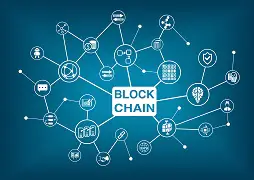
Most of the technological innovations we witness today have an underlying approach to solve a problem. Let’s consider Bitcoin, it was made to solve a problem that had been confounding digital activists for long: how to create digital property without a central authority, tracking who owns what. Bitcoin was the first technology that utilized blockchain. Blockchain is being adopted rapidly, in fact it is estimated by IBM that 65% of the major global banks are to use blockchain in the near future.
Blockchain is a secure transaction ledger database that is shared by all parties participating in an established, distributed peer-to peer network. This peer-to-peer network is updated and verified through consensus of all the parties involved. Blockchains are classified into following types:
- Public blockchain – Anyone can read and write the data stored on the Blockchainas it is accessible to everyone. A cryptocurrency like Bitcoin is an example of public blockchain.
- Private blockchain– The permissions to write data onto the Blockchain are controlled by one organization which is highly trusted by the other users in the network. Managing digital identity could be a Private blockchain use case
- Permissioned blockchain– Here only a restricted set of users have the rights to validate the block transactions. Such blockchains are used for global monetary transactions.
One of the quotes associated with Blockchain is that it is “A transfer of trust in a trustless world”. Blockchain records and stores each and every transaction that occurs in the network, removing the need for “trusted” third parties for processing such transaction. Blockchain aims to provide secure, tamper-resistant and a decentralized atmosphere to store data .Due to such features, blockchain has its various applications in HCM systems. To list a few:
- Verifying employee Information
In the recruitment process, the HR has to verify various documents and information before hiring an employee such as the educational certifications, reference checks etc. Such important employee information along with employee’s electronic signature could be published on the blockchain which the HR could then access. Given that blockchain is secure by design and tamper-resistant, this could save time for authentication and verification processes of recruitment.
- Automated Claim Payments
Usually the insured individual makes a claim which is reviewed by the claim adjuster followed by the claim payment. Here claim automation could be of help, and is achieved through Smart contracts (A smart contract is a contract between two or more parties that is created and stored in the Ethereum blockchain). These contracts execute themselves based on the predefined conditions on the blockchain, so they can help automate claim payments if the conditions related to the claim are clear and obvious.
- Reduce the risk of fraud claims
Due to fraudulent claims, huge losses can occur to the insurance companies. As blockchains are filled with individual’s data and the smart contracts can trigger their response based on this data, it makes it difficult for an individual to fake a claim.
- Cross country Payments
Eliminating third parties is one of the major advantages of Blockchain. Consider the payment processing of international workers, remote employees and contractors. Here bitcoin based payroll service can help minimize the cost associated with transfer of payment and save the time of the employer and employee. The chain blockchain platform also helps with international monetary transaction.
Now that, blockchain’s performance in the HCM systems is known lets view certain blockchain platforms that help achieve this performance:
- Ethereum
It is a blockchain platform that helps to build and use decentralized applications that run on blockchain technology. A third party cannot make any changes to the data. It is a platform for coding and processing smart contracts.
- OpenChain
It is an open source distributed ledger technology. It does not use the concept of blocks. Here the transactions are directly chained with one another, and they are no longer grouped in blocks as grouping transactions in blocks could cause delay. Organizations wishing to issue and manage digital assets can opt for OpenChain platform.
- Chain
It is a blockchain platform for issuing and transferring financial assets on a permissioned blockchain infrastructure. It is based on “Chain Core” which is an enterprise software product that implements the Chain Protocol.
A short overview of the blockchain platforms:
| Blockchain Platform | Type of Blockchain | Languages | Use case |
| Ethereum | Public | C++, Python, Go | Verification of employee information, Smart contracts |
| OpenChain | Private | Javascript | Managing digital assets, gift cards |
| Chain | Permissioned | Java, Ruby, Node.JS | Quick transfer of money internationally |
Blockchain is looked upon as a technology that emphasizes to be “Internet of Value or Money”. It is envisioned to change the world with its capabilities. In a certain number of years a lot of our digital life may begin to run on the Blockchain foundation, so it is clearly a space to watch out for.





